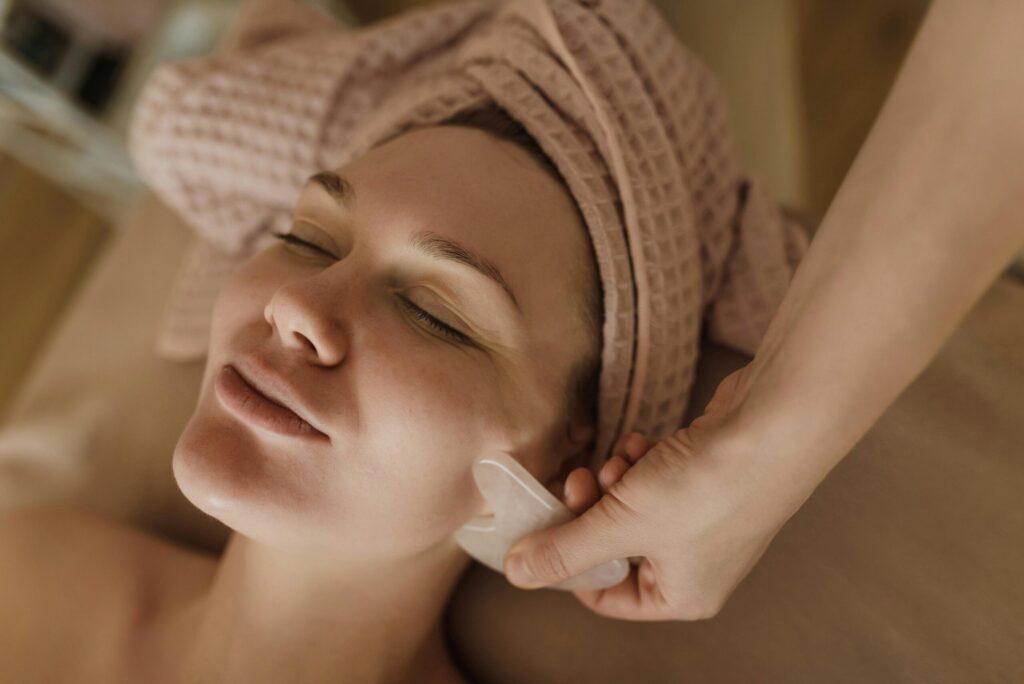The quest to maintain youthful appearance and vitality has existed throughout human history. While aging remains inevitable, how we experience this natural process varies considerably. Many people now seek alternatives to invasive procedures like surgery or injectable treatments.
Natural anti aging therapie approaches focus on supporting the body’s regenerative capabilities rather than simply covering up surface symptoms of time’s passage.
The Biological Foundations of Aging
Understanding what drives aging at the cellular level helps explain why certain natural interventions prove effective. Aging involves several interconnected processes that gradually change how our bodies function and appear.
Cellular damage accumulates over decades through various mechanisms. Telomeres (protective caps on our chromosomes) gradually shorten with each cell division. Our cellular energy factories (mitochondria) become less efficient. Oxidative damage from free radicals builds up. Inflammation increases. Hormone production declines. Proteins lose their proper structure and function.
These biological changes eventually manifest as familiar signs – skin loses elasticity and moisture, wrinkles form, muscle mass decreases, energy levels drop, recovery slows, and cognitive function may decline.
Anti aging therapy approaches target these fundamental processes rather than just addressing surface appearances. By supporting cellular health and function, these methods aim to slow or sometimes partially reverse biological aging itself.
Comparing Conventional Treatments to Natural Methods
Traditional approaches typically involve medical procedures, injectable treatments, or pharmaceutical interventions. These methods often produce quick, visible results but generally address only outer appearances without affecting underlying causes.
Natural anti aging therapie takes a different path. These approaches work to enhance the body’s innate regenerative capabilities, improving health from the cellular level outward. Benefits frequently extend beyond appearance to include improved energy, better thinking, stronger immunity, and enhanced overall function.
The therapy anti aging specialists recommend typically combines several complementary approaches rather than relying on single interventions. This comprehensive strategy addresses various aging pathways simultaneously, potentially yielding better long-term results.
Nutrition Strategies for Cellular Rejuvenation
Few factors influence aging more profoundly than what we consume daily. Certain eating patterns consistently correlate with longevity and reduced age-related disease across diverse populations.
Food Choices That Support Youthful Function
Plant-focused diets rich in colorful vegetables and fruits provide antioxidants that help neutralize damaging free radicals. These protective compounds include vitamin C, vitamin E, carotenoids, and thousands of beneficial plant chemicals (phytonutrients) that support cellular health and function.
Healthy fats, particularly omega-3 fatty acids found in cold-water fish, walnuts, flax and chia seeds, help manage inflammation levels – a key driver of aging. These fats maintain cell membrane fluidity and support brain health, which often shows noticeable decline with advancing years.
Protein becomes increasingly important with age as muscle maintenance grows more challenging. High-quality sources like fish, poultry, eggs, dairy, legumes, and properly prepared plant proteins help preserve lean tissue that naturally diminishes over time.
Minimizing refined carbohydrates and sugars helps prevent glycation – a process where sugar molecules bind to proteins and fats, creating harmful compounds called advanced glycation end products (AGEs). These damaged molecules contribute to skin wrinkling, arterial stiffening, and other age-related changes.
Strategic Eating Patterns
When we eat appears almost as important as what we consume. Intermittent fasting or time-restricted eating activates cellular cleaning mechanisms (autophagy) that remove damaged components and recycle them into new, functional parts.
Caloric restriction without malnutrition consistently extends lifespan in research models. More moderate approaches like eating slightly less than hunger demands may provide similar benefits without the challenges of severe restriction.
The Mediterranean eating pattern – emphasizing vegetables, fruits, whole grains, legumes, fish, olive oil, and moderate wine – correlates strongly with healthy aging and reduced age-related diseases in numerous studies. This approach provides valuable nutrients while minimizing processed foods that can accelerate aging processes.
Movement Approaches for Physical Rejuvenation
Physical activity powerfully influences how we age, affecting nearly every biological system involved in the aging process. Different forms of movement provide unique benefits for countering age-related decline.
Resistance Training for Structural Integrity
Muscle naturally diminishes by approximately 3-8% per decade after age 30 – a process called sarcopenia. This loss accelerates after 60 unless counteracted through appropriate exercise. Resistance training using weights, bands, machines, or body weight helps preserve lean tissue that supports metabolism, functionality, and appearance.
Beyond muscle preservation, resistance exercise stimulates bone formation. This becomes particularly valuable for preventing osteoporosis – the age-related loss of bone density that increases fracture risk. Just two or three weekly sessions can significantly slow bone loss that typically occurs with advancing years.
Connective tissues like tendons and ligaments also respond positively to appropriate resistance training. Maintaining these structures helps preserve joint function and mobility that often decline with age.
Cardiovascular Activity for Systemic Health
Regular aerobic exercise improves circulation, oxygen delivery, and waste removal throughout the body. These effects support cellular function in all tissues and organs, potentially slowing various aging processes.
Cardiovascular activity stimulates the production of nitric oxide, which helps blood vessels remain flexible rather than stiffening with age. This improved vascular function benefits everything from brain health to sexual function – areas often affected by advancing years.
The heart itself adapts positively to appropriate aerobic challenge. Regular cardiovascular exercise helps maintain cardiac efficiency that typically declines over time, supporting energy levels and functional capacity into later years.
Restorative Practices for Cellular Regeneration
Certain aspects of modern lifestyles accelerate aging processes unless balanced with appropriate restorative practices. Two areas deserve particular attention for their powerful anti-aging effects.
Sleep Optimization
Quality sleep provides irreplaceable opportunities for repair and regeneration that cannot occur during waking hours. During deep sleep stages, growth hormone reaches peak levels, supporting tissue repair, muscle maintenance, and fat metabolism.
The brain’s waste clearance system (glymphatic system) activates primarily during sleep, removing metabolic byproducts and proteins associated with neurodegenerative diseases. This “cleaning service” runs up to ten times more actively during sleep than wakefulness.
Skin regeneration accelerates during sleep hours, with cell division occurring more rapidly than during daytime. This helps explain why chronic sleep deprivation often appears as premature skin aging and dullness.
Most adults benefit from 7-9 hours of quality sleep in cool, dark environments. Maintaining consistent sleep-wake schedules supports the body’s internal timing mechanisms (circadian rhythms) that regulate numerous age-related processes.
Stress Regulation Techniques
Chronic stress accelerates aging through multiple pathways. Stress hormones like cortisol break down collagen, promote inflammation, impair immune function, and even affect how genes express themselves.
Several approaches help manage this aging accelerator:
- Mindfulness practices reduce stress hormones and inflammation while potentially preserving telomere length – a key marker of cellular aging
- Breathing techniques activate the parasympathetic nervous system (rest-and-digest mode), counteracting stress chemistry
- Time spent in natural settings lowers stress hormones and blood pressure while improving mood
- Meaningful social connections correlate strongly with longevity across diverse populations
These approaches work not merely as “feel-good” techniques but as physiological interventions that directly affect aging mechanisms at the cellular level.
External Supports for Visible Rejuvenation
While internal processes drive aging, external treatments can complement these approaches and provide noticeable improvements, particularly for skin – our most visible aging indicator.
Evidence-Based Natural Skincare
Unlike marketing-driven products with minimal effectiveness, certain natural compounds show substantial evidence for improving aging skin. Retinol (vitamin A derivatives) stands among the few topical ingredients clinically proven to reduce wrinkles and improve texture by accelerating cell turnover and supporting collagen production.
Vitamin C serums protect against UV damage while supporting collagen synthesis – the protein that provides skin structure and firmness. This antioxidant also helps brighten skin tone and reduce age-related pigmentation changes.
Plant compounds like resveratrol, green tea polyphenols, and niacinamide (vitamin B3) show promising research for addressing various aspects of skin aging through antioxidant, anti-inflammatory, and cell-signaling effects.
Plant oils rich in essential fatty acids help restore the skin barrier function that often diminishes with age. This improved protection reduces moisture loss and shields against environmental damage that accelerates aging.
Creating an Integrated Approach
The most effective anti aging therapie programs combine multiple strategies for synergistic benefits. Rather than focusing exclusively on single methods, comprehensive approaches address various factors influencing aging processes.
A balanced program typically includes anti-inflammatory eating patterns, appropriate exercise, quality sleep, stress management, and evidence-based skincare. This multifaceted approach supports the body’s natural regenerative capabilities across multiple systems.
Consistency matters more than perfection in these approaches. Small, sustainable habits maintained over time yield better results than short-term extreme measures. Aging occurs gradually over decades; similarly, effective anti-aging efforts require patience and persistence.
Natural anti-aging approaches acknowledge that aging itself isn’t a disease to be cured but a process to be experienced as healthfully as possible. The goal shifts from simply appearing younger to aging well – maintaining physical function, cognitive ability, and vitality throughout the lifespan.
By addressing fundamental biological mechanisms through natural means, these therapies offer the possibility of not just extending lifespan but enhancing health span – the portion of life spent in good health and full function.



 Gracenie Stamperon
is a dedicated wellness enthusiast and content creator for My Healthy Living and Strategies, a platform focused on promoting holistic health, balanced living, and personal well-being. Gracenie’s passion for healthy living stems from her lifelong interest in nutrition, fitness, and mindfulness. With a background in health education, she brings a wealth of knowledge and practical strategies to help individuals achieve their wellness goals.
Gracenie Stamperon
is a dedicated wellness enthusiast and content creator for My Healthy Living and Strategies, a platform focused on promoting holistic health, balanced living, and personal well-being. Gracenie’s passion for healthy living stems from her lifelong interest in nutrition, fitness, and mindfulness. With a background in health education, she brings a wealth of knowledge and practical strategies to help individuals achieve their wellness goals.